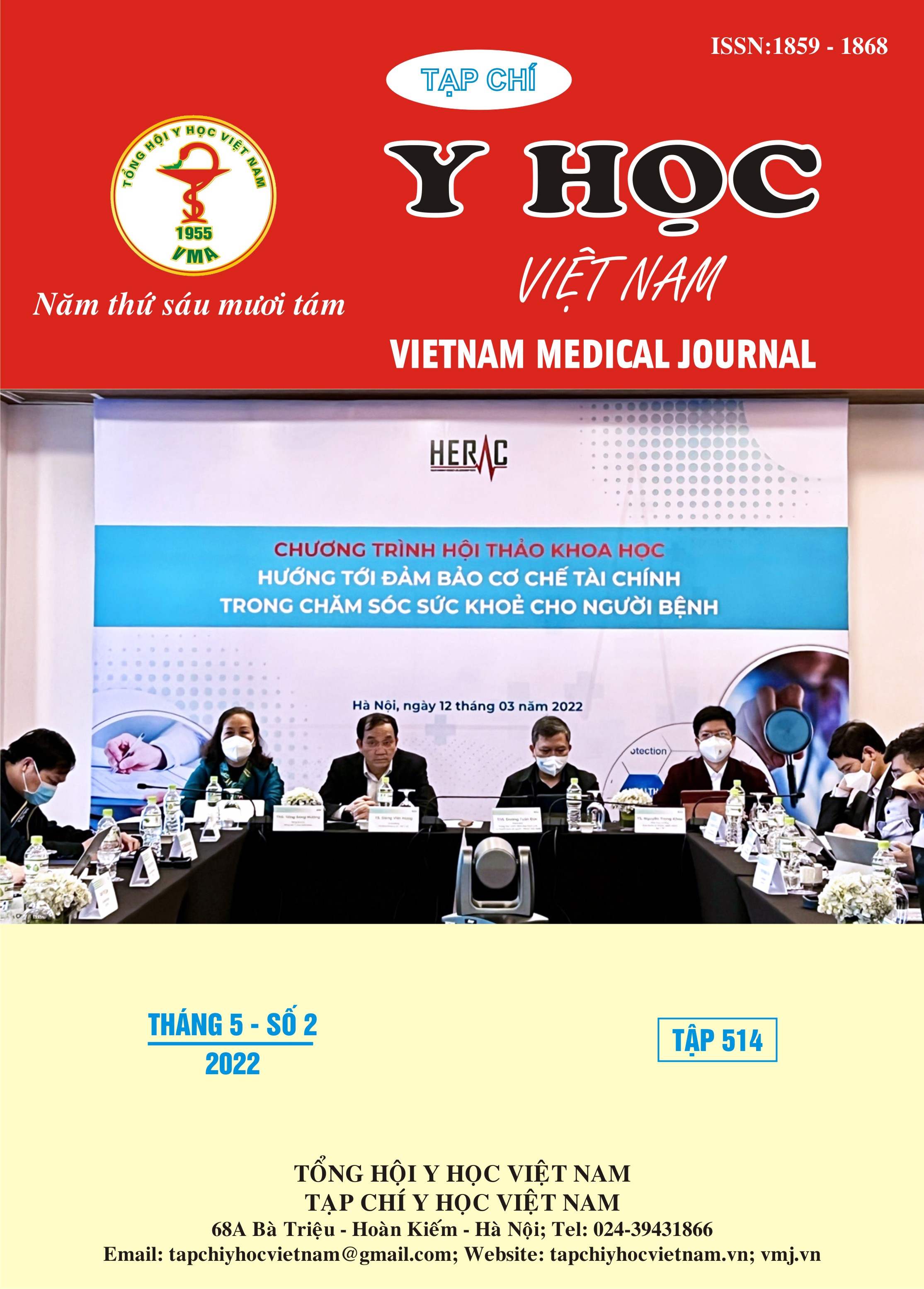THE PERIOPERATIVE HEMODYNAMIC, ARTERIAL BLOOD GAS IN THE MAJOR ABDOMINAL SURGERIES
Main Article Content
Abstract
Major abdominal surgery is surgery that causes blood loss, fluid loss and causes many hemodynamic changes during surgery. The study was conducted at Hanoi Medical University Hospital from January to October 2021 on 138 patients to investigate intraoperative hemodynamic status and changes in arterial blood gases perioperative. The results showed that in 138 patients, 86.2% had gastrointestinal cancer surgery, hypotension after induction of anesthesia occurred in 44.9% of patients, the blood pressure decreased by 16 % averagely. Arterial blood gas test showed a tendency of mixed acidosis during surgery, after surgery there was a statistically significant decrease in PaO2 and PaO2/FiO2. Conclusion: the major abdominal surgery had a decrease in blood pressure at the induction of anesthesia, however, there was not much change in hemodynamics during surgery, and the tendency to acidosis when the surgery time was prolonged and decreased blood oxygen after surgery.
Article Details
Keywords
major abdominal surgery, hemodynamics, arterial blood gas
References
2. M. Cihoric, H. Kehlet, M.L. Lauritsen, et al. Electrolyte and Acid–Base Disturbances in Emergency High-Risk Abdominal Surgery, a Retrospective Study. World J Surg. 2022;https://doi.org/10.1007/s00268-022-06499-9.
3. Shounthoo Rs, Shamim A, Et Al. Arterial blood gases changes in upper abdominal surgeries. A prospective study. 2016;4(4D):1384-1391. www.saspublisher.com.
4. Phạm Quang Minh. Đánh giá sự thay đổi khí máu động mạch sau mổ và các yếu tố nguy cơ của giảm oxy máu động mạch ở bệnh nhân được phẫu thuật bụng. Luận án Tiến sĩ Y học. 2014:Đại học Y Hà Nội.
5. S. S Mogoanta, S Paitici, C. A Mogoanta. Postoperative Follow-Up and Recovery after Abdominal Surgery. In: Zaghal A, Rifai AE, eds. Abdominal Surgery - A Brief Overview. IntechOpen; 2021.
6. Charlson M.E, Pompei P, Ales K.L, et al. A new method of classifying prognostic comorbidity in longitudinal studies: development and validation. J Chronic Dis. 1987;40(5):373-383.
7. Luiz P.J., Rodrigo B.A., Maria C.V., et al. Hemodynamic evaluation of elderly patients during laparoscopic cholecystectomy. Rev Col Bras Cir. 2018;45(2).
8. Paul S. Myles, Rinaldo Bellomo, Tomas Corcoran, et al. Restrictive versus Liberal Fluid Therapy for Major Abdominal Surgery. N Engl J Med. 2018;378(24):2263-2274.
9. C. Salzwedel, J. Puig, A. Carstens, et al. Perioperative goal-directed hemodynamic therapy based on radial arterial pulse pressure variation and continuous cardiac index trending reduces postoperative complications after major abdominal surgery: a multi-center, prospective, randomized study. Crit Care. 2013;17(R191).


